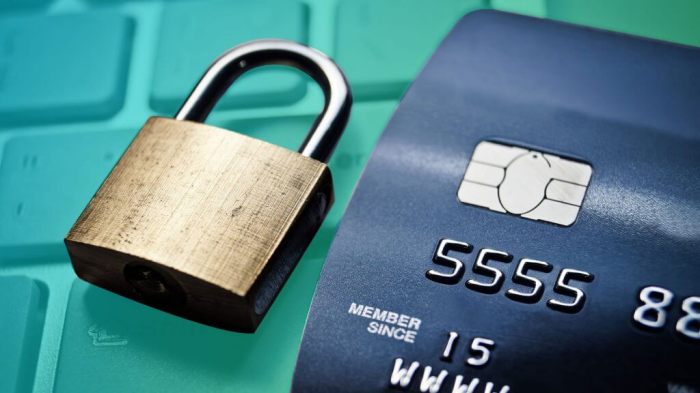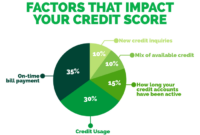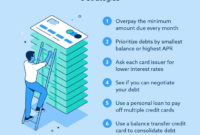Credit card fraud protection is essential in today’s digital age, where threats to your financial security lurk around every corner. From the devastating impacts of fraud to the various prevention strategies, this topic dives deep into safeguarding your assets.
Importance of Credit Card Fraud Protection
Credit card fraud protection is crucial for both individuals and businesses in safeguarding their financial security. With the rise of digital transactions and online shopping, the risk of credit card fraud has increased significantly, making it essential to have measures in place to prevent and address fraudulent activities.
Do not overlook explore the latest data about Credit card comparison 2025.
Impact on Financial Security
- Credit card fraud can lead to unauthorized charges on your account, resulting in financial losses that can be difficult to recover.
- Identity theft, often facilitated through credit card fraud, can have long-lasting consequences on your credit score and overall financial well-being.
- Businesses can also suffer significant financial losses due to credit card fraud, affecting their bottom line and reputation among customers.
Consequences of Being a Victim
- Victims of credit card fraud may experience stress and anxiety as they try to resolve unauthorized transactions and reclaim their funds.
- Credit card fraud can damage trust in financial institutions and online payment systems, leading to a loss of confidence in the security of digital transactions.
- In some cases, victims of credit card fraud may face legal consequences or challenges in proving their innocence, further complicating the situation.
Common Types of Credit Card Fraud

Credit card fraud is a prevalent issue that can affect anyone who uses a credit card for transactions. Fraudsters employ various methods to commit credit card fraud, compromising personal information and financial assets. Let’s delve into some common types of credit card fraud:
Account Takeover
Account takeover occurs when a fraudster gains unauthorized access to a victim’s credit card account. This can be achieved through various means, such as phishing scams or data breaches. Once the fraudster has control of the account, they can make purchases, transfer funds, or change account details without the victim’s knowledge.
Card Skimming, Credit card fraud protection
Card skimming involves the use of a device to capture data from a credit card’s magnetic stripe. Fraudsters often place skimming devices on ATMs, gas pumps, or other point-of-sale terminals to collect card information. This stolen data can then be used to create counterfeit cards or make unauthorized transactions.
Phishing
Phishing is a fraudulent practice where fraudsters send fake emails or messages to trick individuals into providing sensitive information, such as credit card numbers, passwords, or personal details. These phishing attempts often mimic legitimate organizations, leading victims to disclose their information unknowingly.
Identity Theft
Identity theft occurs when a fraudster steals a person’s personal information, such as their Social Security number, to open new credit card accounts or make unauthorized transactions. This type of fraud can have serious consequences for victims, leading to financial losses and damage to their credit score.
Each of these types of credit card fraud poses a significant threat to consumers, highlighting the importance of implementing robust security measures to protect against fraudulent activities.
Strategies for Preventing Credit Card Fraud

Credit card fraud is a serious threat that can lead to financial loss and identity theft. To protect yourself from falling victim to credit card fraud, there are several strategies you can implement to safeguard your personal and financial information.
Regularly Monitor Account Activity
One of the most important steps individuals can take to protect themselves from credit card fraud is to regularly monitor their account activity. By reviewing your credit card statements and transaction history frequently, you can quickly identify any unauthorized charges or suspicious activity. If you notice any discrepancies, report them to your credit card issuer immediately.
Secure Personal Information
It is crucial to secure your personal information both online and offline to prevent fraud. Avoid sharing sensitive information such as your credit card number, expiration date, and CVV code in emails, text messages, or over the phone. Be cautious when providing personal details on websites and only enter your credit card information on secure and reputable sites.
Use Strong Passwords and Two-Factor Authentication
Protect your online accounts by using strong, unique passwords for each account and enabling two-factor authentication whenever possible. This adds an extra layer of security to your accounts and reduces the risk of unauthorized access. Avoid using easily guessable passwords or sharing them with others.
Be Wary of Phishing Scams
Be cautious of emails, messages, or phone calls asking for your personal or financial information. Phishing scams are a common tactic used by fraudsters to trick individuals into revealing sensitive data. Do not click on suspicious links or download attachments from unknown sources. Verify the legitimacy of the request by contacting the company directly through their official channels.
Keep Your Devices and Software Updated
Ensure that your devices, including smartphones, tablets, and computers, are equipped with the latest security updates and antivirus software. Regularly update your operating system, browsers, and applications to patch any vulnerabilities that hackers could exploit to access your personal information.
Report Lost or Stolen Cards Immediately
If your credit card is lost or stolen, report it to your card issuer right away to prevent unauthorized charges. Keep a record of your credit card details in a secure place separate from your physical cards, so you can easily access them in case of emergencies.
Technologies and Tools for Credit Card Fraud Protection
As the landscape of credit card fraud evolves, advancements in technology play a crucial role in enhancing security measures to protect consumers and businesses. Let’s explore some of the key technologies and tools used for credit card fraud protection.
EMV Chips and Tokenization for Secure Transactions
EMV (Europay, Mastercard, and Visa) chips have become standard in credit and debit cards, providing an added layer of security during in-person transactions. These chips generate a unique code for each transaction, making it harder for fraudsters to clone cards or steal sensitive information. Tokenization, on the other hand, replaces card data with a unique token, further securing online transactions and reducing the risk of data breaches.
Role of Biometrics and Two-Factor Authentication
Biometric authentication methods, such as fingerprint or facial recognition, are increasingly being integrated into credit card systems to verify the identity of cardholders. Two-factor authentication adds an extra layer of security by requiring users to provide two forms of verification before completing a transaction. These methods help prevent unauthorized access and reduce the chances of fraudulent activities.
Machine Learning and AI for Fraud Detection
Machine learning algorithms and artificial intelligence are being utilized by financial institutions to analyze patterns and detect anomalies in transaction data. These advanced technologies can identify suspicious activities in real-time, flagging potentially fraudulent transactions for further investigation. By continuously learning from new data and adapting to emerging threats, machine learning and AI play a vital role in preventing credit card fraud.
In conclusion, maintaining vigilance and employing the right protective measures are key to staying safe from credit card fraud. By staying informed and proactive, you can reduce the risks and enjoy peace of mind in your financial transactions.



